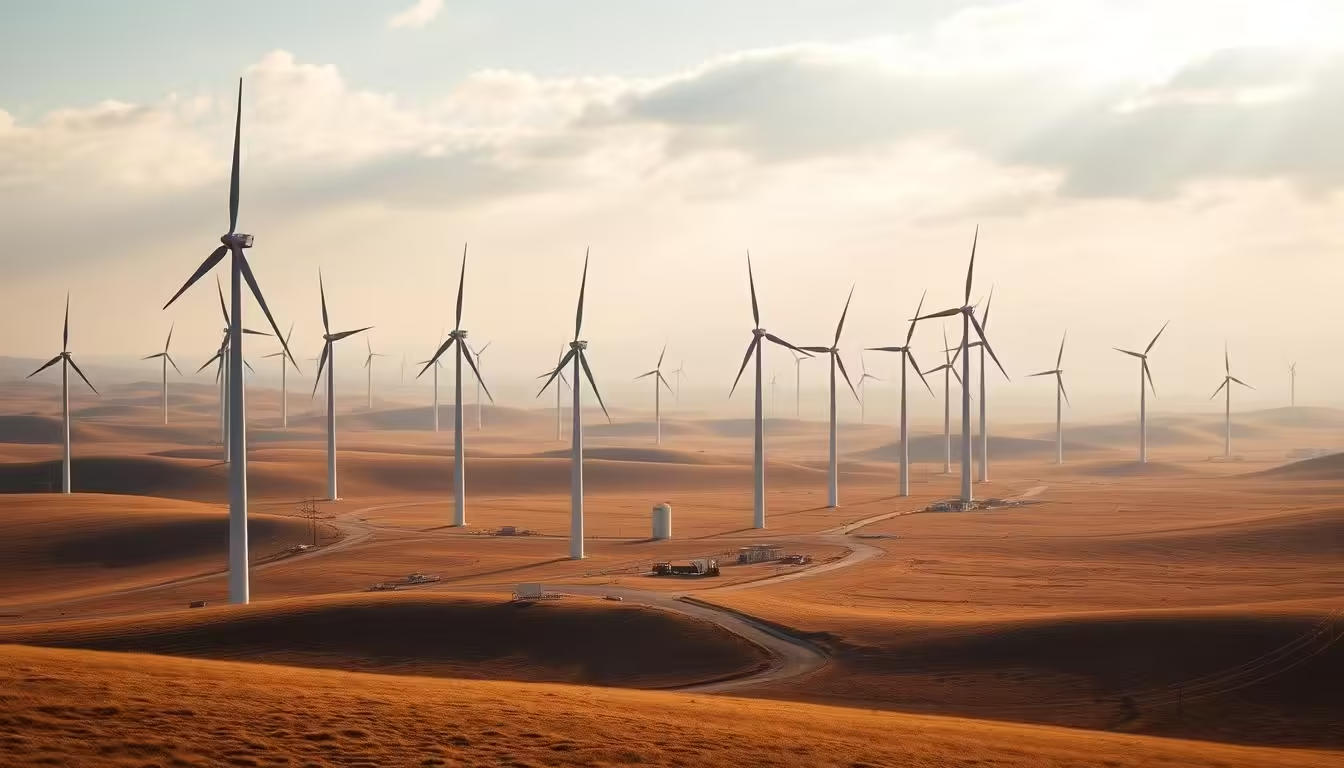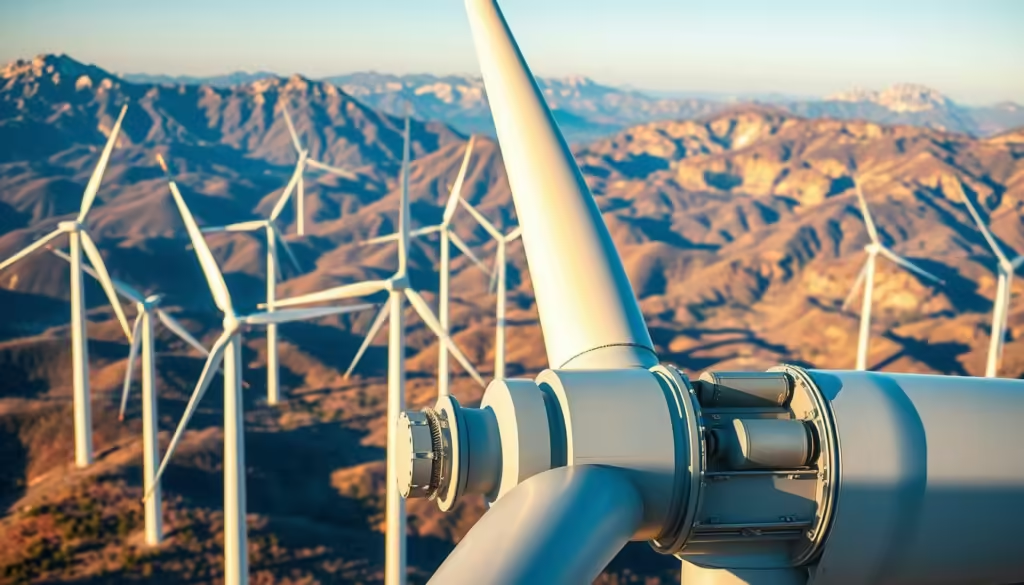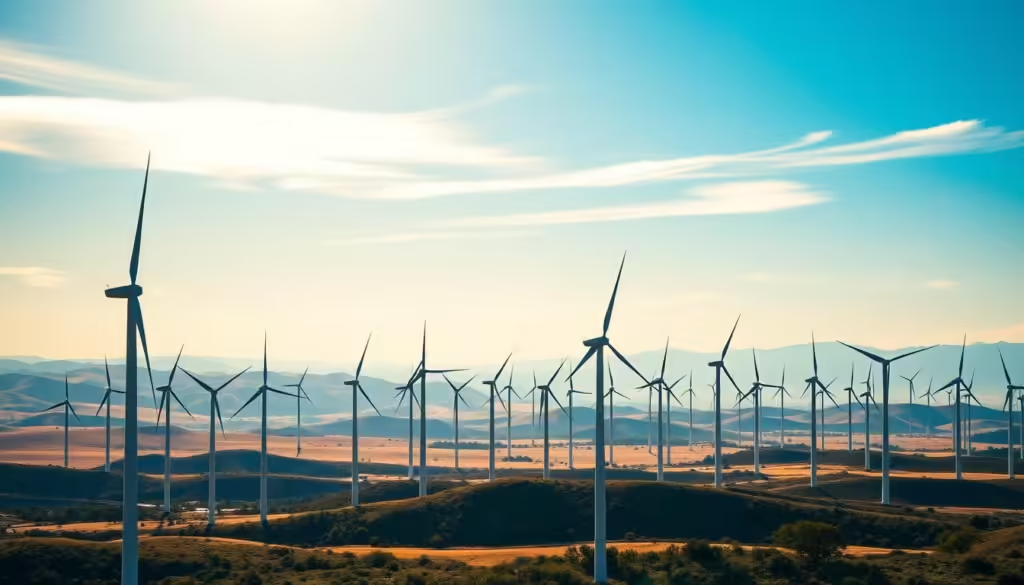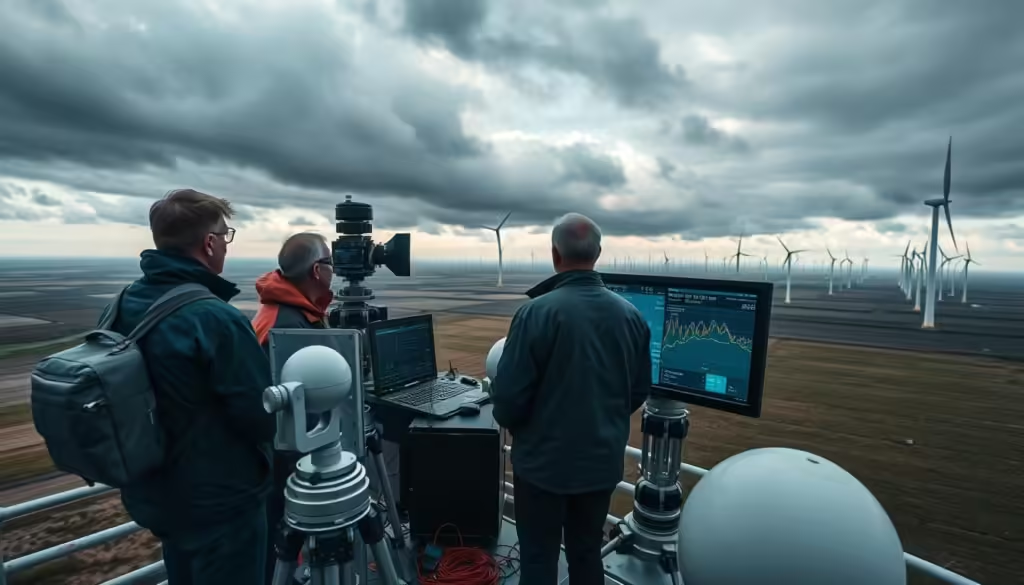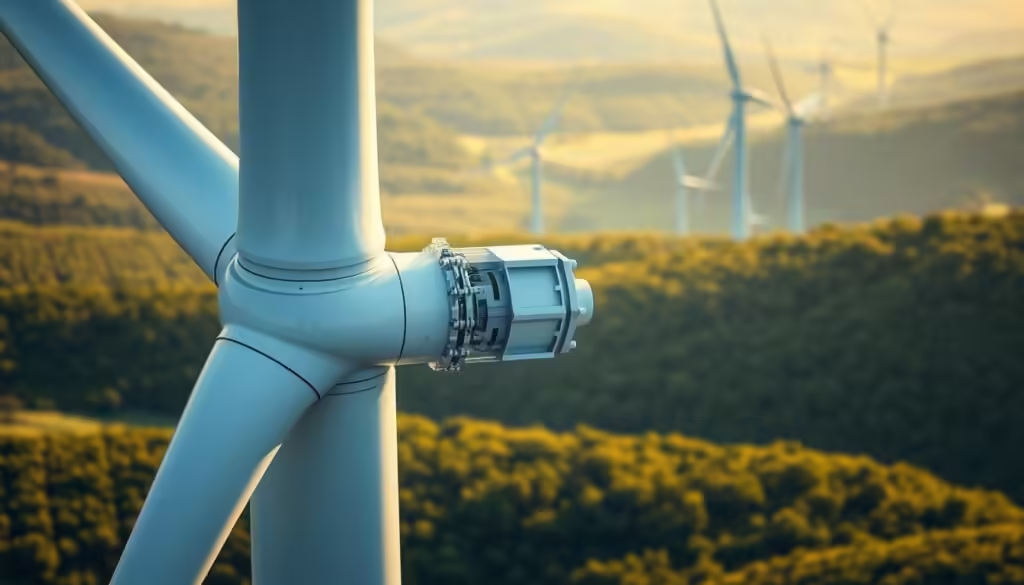Buildings account for a significant portion of global energy consumption, making energy efficiency a critical focus area. The integration of smart sensors in green buildings is revolutionizing the way we manage resources.
By leveraging smart sensors, buildings can now optimize their energy usage, reducing waste and promoting sustainability. This not only benefits the environment but also results in cost savings for building owners and occupants.
Key Takeaways
- Smart sensors play a crucial role in managing energy consumption in green buildings.
- The use of smart sensors leads to significant reductions in energy waste.
- Green buildings with smart sensors promote sustainability and energy efficiency.
- Cost savings are a notable benefit for building owners and occupants.
- The integration of smart sensors is a step towards a more sustainable future.
The Rise of Intelligent Architecture: Why Smart Buildings Matter
As the world grapples with climate change, the need for sustainable building solutions has never been more pressing. The construction industry is under increasing pressure to reduce its environmental footprint.
The Urgent Need for Sustainable Building Solutions
The environment is facing unprecedented threats, from rising temperatures to depleting natural resources. Sustainable building practices are crucial for mitigating these impacts. By incorporating green technologies, buildings can significantly reduce their energy consumption and emissions.

How Smart Buildings Are Transforming Urban Landscapes
Smart buildings are revolutionizing urban landscapes by integrating advanced technologies to enhance sustainability and efficiency. These buildings utilize sensors and data analytics to optimize energy use, water consumption, and waste management, creating a more livable and environmentally friendly urban environment.
By embracing intelligent architecture, cities can move towards a more sustainable future, reducing their overall carbon footprint and contributing to global efforts to combat climate change.
The Science Behind Smart Sensors in Green Buildings
The integration of smart sensors in green buildings is revolutionizing the way we manage energy and resources. These sensors are crucial in creating a sustainable and efficient built environment.
Types of Sensors Revolutionizing Building Management
Various types of sensors are being utilized in green buildings, including occupancy sensors, temperature sensors, and light sensors. These sensors work together to optimize building operations.
- Occupancy sensors detect the presence of people in a room and adjust lighting and temperature accordingly.
- Temperature sensors monitor and control the heating and cooling systems to maintain a comfortable temperature.
- Light sensors adjust the lighting levels based on the available natural light.
How Data Collection Creates Efficiency Opportunities
The data collected by these sensors is used to identify areas of inefficiency and opportunities for improvement. By analyzing this data, building managers can make informed decisions to optimize energy consumption.
| Sensor Type | Function | Efficiency Opportunity |
|---|---|---|
| Occupancy Sensor | Detects presence and adjusts lighting and temperature | Reduces energy waste in unoccupied spaces |
| Temperature Sensor | Monitors and controls heating and cooling | Optimizes HVAC performance |
| Light Sensor | Adjusts lighting levels based on natural light | Reduces artificial lighting needs |
IoT Integration and Building Management Systems
The integration of IoT technology with building management systems enables real-time monitoring and control of building operations. This integration allows for more efficient energy management and improved building performance.

By leveraging smart sensors and IoT integration, green buildings can achieve significant energy efficiency gains and reduce their environmental impact.
Illuminating Efficiency: Smart Lighting Control Systems
By integrating smart technologies, lighting control systems can now optimize energy usage, enhancing the sustainability of buildings. This is achieved through a combination of advanced technologies that work together to minimize energy waste.
Daylight Harvesting and Automatic Dimming
One of the key features of smart lighting control systems is daylight harvesting. This involves using sensors to detect the amount of natural light available in a space and adjusting the artificial lighting accordingly. Automatic dimming ensures that lights are not brighter than necessary, reducing energy consumption.

Occupancy Detection and Usage Patterns
Smart lighting systems can also detect occupancy and adjust lighting based on usage patterns. This means that lights can be turned off or dimmed in unoccupied areas, further reducing energy waste. By analyzing usage patterns, these systems can optimize lighting schedules to match the needs of the building’s occupants.
LED Technology and Adaptive Lighting Solutions
The integration of LED technology with smart lighting control systems offers significant energy efficiency benefits. LEDs are inherently energy-efficient, and when combined with adaptive lighting solutions, they can provide the right amount of light exactly when and where it’s needed. Adaptive lighting adjusts based on various factors, including time of day, occupancy, and natural light availability.
In conclusion, smart lighting control systems represent a significant advancement in the quest for energy efficiency and sustainability in buildings. By leveraging technologies like daylight harvesting, occupancy detection, and adaptive lighting, these systems can significantly reduce energy waste and enhance the overall sustainability of green buildings.
Climate Control Reimagined: Temperature Management Systems
As the world grapples with climate change, innovative temperature management systems are revolutionizing how we control our environment. These systems are crucial in reducing energy consumption while maintaining optimal comfort levels within buildings.
Precision HVAC Control Through Sensor Networks
Precision HVAC control is made possible through advanced sensor networks that monitor and adjust temperature settings in real-time. This technology ensures that heating and cooling systems operate efficiently, reducing waste and lowering energy bills.
“The integration of sensor networks with HVAC systems represents a significant leap forward in building management,” says an industry expert.
Zone-Based Comfort Optimization
Zone-based comfort optimization allows for different areas within a building to be heated or cooled according to specific needs. This approach not only enhances occupant comfort but also reduces energy consumption by avoiding unnecessary heating or cooling in unoccupied areas.
Weather-Responsive Automated Adjustments
Weather-responsive automated adjustments take into account external weather conditions to optimize indoor temperatures. By predicting and adapting to weather changes, these systems ensure that buildings remain comfortable while minimizing energy use.
This proactive approach to temperature management is a significant step towards mitigating the impact of climate change.
Energy Management: The Heart of Green Technology and Sustainability
At the heart of sustainable building practices lies effective energy management. This crucial aspect of green technology enables buildings to optimize their energy usage, reducing waste and promoting energy efficiency.

Real-Time Consumption Monitoring and Analytics
Real-time consumption monitoring and analytics play a vital role in energy management. By tracking energy usage in real-time, building managers can identify areas of inefficiency and make data-driven decisions to optimize energy consumption, thereby enhancing overall sustainability.
Load Balancing and Demand Response Systems
Load balancing and demand response systems are essential for managing energy distribution and consumption. These systems help to shift energy usage during peak hours, reducing strain on the grid and promoting green tech adoption.
Integration with Renewable Energy Sources
The integration of renewable energy sources is a critical component of sustainable energy management. By incorporating solar, wind, or other renewable energy sources, buildings can reduce their reliance on fossil fuels, minimizing their carbon footprint and promoting energy efficiency.
Effective energy management is crucial for achieving sustainability in buildings. By leveraging real-time monitoring, load balancing, and renewable energy integration, buildings can significantly reduce their environmental impact while promoting green tech innovation.
Quantifying the Impact: How Smart Buildings Benefit Our Environment
The environmental benefits of smart buildings are multifaceted, ranging from reduced energy consumption to lower carbon emissions. As the world grapples with the challenges of climate change, sustainable building practices have become increasingly important.
Carbon Footprint Reduction Through Efficiency
Smart buildings achieve significant reductions in their carbon footprint through the efficient use of resources. By leveraging advanced sensors and data analytics, these buildings can optimize energy consumption, reducing waste and minimizing their environmental impact.
- Energy-efficient lighting and HVAC systems
- Real-time energy monitoring and analytics
- Automated energy-saving protocols
Resource Conservation Metrics and Achievements
Resource conservation is a critical aspect of smart building design. By implementing water-saving measures and reducing energy consumption, smart buildings can significantly minimize their environmental footprint.

- Reducing water consumption through efficient fixtures and greywater reuse systems
- Implementing recycling programs and reducing waste
- Using sustainable materials in construction and renovation projects
Contribution to Climate Change Mitigation Goals
Smart buildings play a crucial role in mitigating climate change by reducing greenhouse gas emissions and promoting sustainable practices. By adopting smart building technologies, cities can make significant strides towards achieving their climate change mitigation goals.
Key strategies include:
- Integrating renewable energy sources into building energy systems
- Promoting energy-efficient practices among building occupants
- Implementing smart grid technologies to optimize energy distribution
The Economic Case: Smart Buildings as Financial Investments
Investing in smart buildings is not just an environmental imperative, but a sound financial strategy. As the world shifts towards Sustainability and Green Tech, the economic benefits of smart buildings are becoming increasingly evident.

Long-Term Operational Cost Savings
One of the primary economic advantages of smart buildings is the significant reduction in operational costs. By leveraging Energy Efficiency measures such as smart lighting and HVAC systems, buildings can reduce their energy consumption by up to 30%. This not only contributes to a more sustainable environment but also results in substantial cost savings.
Predictive Maintenance and Extended Building Lifespan
Smart buildings also benefit from predictive maintenance, which uses data analytics to identify potential issues before they become major problems. This proactive approach to maintenance can extend the lifespan of building systems and reduce the need for costly repairs. By investing in Green Tech, building owners can ensure that their properties remain competitive and valuable over time.
Enhanced Property Values and Market Competitiveness
The incorporation of smart building technologies can significantly enhance property values and market competitiveness. Buildings that are equipped with the latest Energy Efficiency and sustainability features are more attractive to tenants and buyers, commanding higher rents and sale prices. As the demand for sustainable and technologically advanced buildings continues to grow, the economic benefits of smart buildings will only continue to increase.
Living in the Future: The Human Experience in Smart Buildings
The human experience is being reshaped by the emergence of intelligent architecture. Smart buildings are not just about technology and sustainability; they’re also about creating environments that enhance our lives.
Comfort and Productivity Enhancements
Smart buildings use advanced systems to optimize comfort and boost productivity. By adjusting lighting and temperature based on occupancy and external conditions, these buildings create ideal working and living conditions.
| Feature | Benefit | Impact |
|---|---|---|
| Smart Lighting | Energy Efficiency | Reduced Energy Consumption |
| Temperature Control | Personalized Comfort | Increased Productivity |
| Air Quality Monitoring | Healthier Environment | Improved Wellbeing |
User Interfaces and Building Interaction
User-friendly interfaces allow occupants to interact with the building’s systems, adjusting settings to suit their preferences. This not only enhances comfort but also fosters a sense of control over one’s environment.
Health and Wellbeing Benefits
Smart buildings contribute to occupant health through advanced air quality monitoring, natural light optimization, and wellness-focused design. These features create a healthier environment that supports wellbeing.
By integrating technology and sustainability, smart buildings are setting a new standard for the built environment. As we move forward, the focus on human experience will continue to shape the development of intelligent architecture.
Overcoming Barriers: Challenges in Smart Building Implementation
The journey to creating intelligent architecture is not without its obstacles. As the world increasingly adopts green tech, understanding and addressing these challenges is crucial for the widespread adoption of smart buildings.
Initial Investment Considerations and Financing Options
One of the primary barriers to smart building implementation is the high initial investment. However, various financing options are becoming available to mitigate this issue. Grants and incentives for energy efficiency can significantly reduce upfront costs. Additionally, companies are exploring Energy-as-a-Service models, where the cost of energy efficiency upgrades is bundled into the energy bill, eliminating the need for large upfront investments.
| Financing Option | Description | Benefits |
|---|---|---|
| Grants and Incentives | Government programs offering financial incentives for energy-efficient upgrades. | Reduces upfront costs. |
| Energy-as-a-Service | A model where energy efficiency upgrades are financed through energy bills. | No large upfront investments. |
Retrofitting Existing Structures with Smart Technology
Retrofitting existing buildings with smart technology poses another significant challenge. However, with advancements in technology, retrofitting is becoming more feasible and cost-effective.
“Retrofitting is not just about installing new technology; it’s about enhancing the building’s functionality and efficiency.”
Companies are now offering retrofit solutions that can be integrated into existing infrastructure, making it easier to upgrade to smart buildings.
Data Security and Privacy Protection Measures
Data security is a critical concern in smart buildings, as they rely heavily on data collection and analysis. Implementing robust data security measures is essential to protect against potential breaches. This includes using encryption, secure data storage solutions, and ensuring compliance with data protection regulations.
By understanding and addressing these challenges, the implementation of smart building technology can be made more efficient and effective, paving the way for a more sustainable future.
The Future of Green Buildings: What's on the Horizon
As the world continues to grapple with the challenges of Climate Change, the importance of Sustainability in the built environment cannot be overstated. Green buildings are at the forefront of this effort, leveraging cutting-edge technologies to minimize their impact on the Environment.
Emerging trends in green buildings include the integration of Artificial Intelligence (AI) and the Internet of Things (IoT) to optimize energy efficiency and reduce waste. Buildings will become increasingly responsive to occupant needs, adjusting lighting, temperature, and energy usage in real-time to create a more comfortable and productive environment.
The future of green buildings also holds much promise for innovative materials and design approaches that prioritize Sustainability and minimize environmental impact. As the industry continues to evolve, we can expect to see new technologies and strategies emerge that will further reduce the carbon footprint of buildings and promote a healthier Environment.
By embracing these emerging trends and technologies, we can create a more sustainable future for generations to come, where buildings not only minimize their impact on the Environment but also contribute to a better quality of life for occupants.
FAQ
What are smart sensors and how do they work in green buildings?
Smart sensors are devices that detect and respond to environmental changes, such as light, temperature, and energy usage. In green buildings, they help manage resources efficiently by automatically adjusting lighting, heating, and cooling systems.
How do smart buildings contribute to sustainability?
Smart buildings reduce waste and energy consumption through efficient management of resources, leading to a lower carbon footprint and contributing to a more sustainable environment.
What is the role of IoT in smart building management?
IoT (Internet of Things) integration enables the connection and communication between various devices and systems within a building, allowing for real-time monitoring and control, and optimizing building operations.
How do smart lighting control systems work?
Smart lighting control systems use sensors and automation to adjust lighting levels based on occupancy, daylight availability, and usage patterns, reducing energy waste and improving efficiency.
What are the benefits of precision HVAC control in smart buildings?
Precision HVAC control through sensor networks optimizes heating and cooling, providing zone-based comfort and reducing energy consumption, while also improving indoor air quality.
How do smart buildings help reduce operational costs?
Smart buildings reduce operational costs through energy efficiency, predictive maintenance, and optimized resource usage, leading to long-term savings for building owners and occupants.
What are the challenges in implementing smart building technology?
Challenges include initial investment costs, retrofitting existing structures, and ensuring data security and privacy, but these can be addressed through careful planning, financing options, and robust security measures.
How do smart buildings enhance occupant comfort and productivity?
Smart buildings enhance comfort and productivity by providing optimized lighting, temperature, and air quality, creating a healthier and more pleasant indoor environment that supports occupant wellbeing.
What is the future of green buildings and smart technology?
The future of green buildings involves the integration of emerging technologies, such as advanced IoT, AI, and renewable energy systems, to create even more efficient, sustainable, and responsive buildings that benefit both occupants and the environment.


